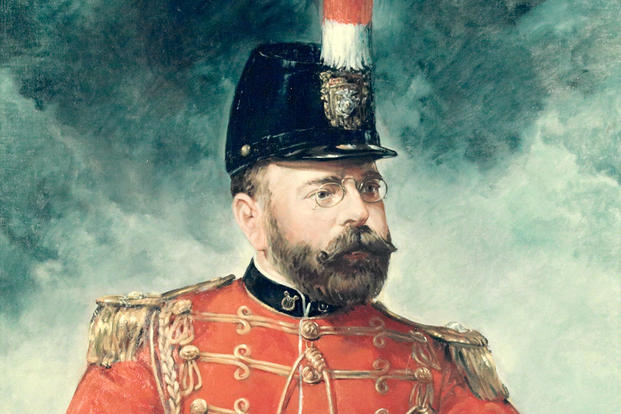At 13, John Philip Sousa, like many boys of his day, wanted to run away and join the circus. Seeing how badly his son wanted to perform, his father, Antonio, a trombonist in the U.S. Marine Corps band, convinced his commander to give the boy a place.
Sousa had studied voice, violin, piano, flute, cornet, baritone, trombone and alto horn from the age of 6. The Marines continued his musical education and taught him to "read, write and cipher" for a deduction from pay of $1 per month. Sousa remained in the Corps for eight years, at the end of which he was discharged to begin a career as a concert violinist and theatrical conductor.
However, shortly after his 1879 marriage to singer Jane van Middlesworth Bellis, the 26-year-old Sousa received a telegram offering him the position as conductor of the Marine band. He accepted and reported for duty on Oct. 1, 1880. As the band's 17th leader, Sousa raised its standards, reshaped its rehearsal discipline and replaced most of its music. Serving under Presidents Rutherford B. Hayes, James Garfield, Grover Cleveland, Chester Arthur and Benjamin Harrison, he made "The President's Own" into a virtuoso ensemble fit for a king -- the "March King," as Sousa was called.
Sousa had already composed a good number of his 136 military marches, including the Marine Corps' official march, "Semper Fidelis" (1888); popular dance march, "The Washington Post' (1889); and his beloved "The Stars and Stripes Forever" (1897). The latter was adopted as the official march of the United States in 1987.
His music may last forever, but Sousa's tenure as bandmaster did not. In 1892, he was offered a job directing his own civilian concert band and retired from the Corps on July 30 of that year to begin touring.
However, his military service continued. During World War I, Sousa enlisted with the U.S. Naval Reserves as a lieutenant, with a salary of $1 a month as a tongue-in-cheek "payback" for his adolescent educational deductions. He took charge of the band-training center at the Great Lakes Naval Base in Illinois, ending his time in the military on the opposite side of the podium.
Sousa died on March 6, 1932, after a rehearsal of "The Stars and Stripes Forever." He is buried in Washington, D.C.'s Congressional Cemetery.
Want to Know More About the Military?
Be sure to get the latest news about the U.S. military, as well as critical info about how to join and all the benefits of service. Subscribe to Military.com and receive customized updates delivered straight to your inbox.















